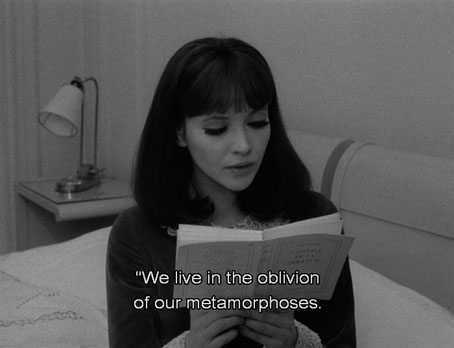
This is science fiction.
Presenting the list I mentioned earlier in which I highlight a number of worthwhile science-fiction films (also some TV productions) that aren’t the usual Hollywood fare. I’ve spent the past few years watching many of these while searching for more. This isn’t a definitive collection, and it isn’t filled with favourites; I’ve deliberately omitted a number of popular films that would count as such. It’s more a map of my generic tastes, and an answer to a question that isn’t always spoken aloud in discussions I’ve had about SF films but which remains implicit: “Okay, if you dislike all this stuff then what do you like?” I tend to like marginal things, hybrids, edge cases, the tangential, the unusual and the experimental. And for the past two decades I’ve increasingly come to value anything that isn’t a Hollywood product. There are two Hollywood productions on this list but neither of them were very successful. Not everything here has been overlooked or neglected but many of the entries have, either because they made a poor showing at the box office or because they have the effrontery to be filmed in languages other than English. Not everything is in the first rank, either, but they’re all worth seeing if you can find them.
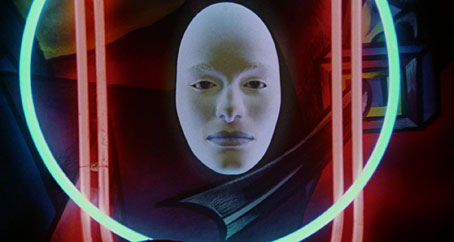
Liquid Sky.
The starting point is around 1960 because prior to this date any marginal or unusual examples of SF cinema are harder to find. A genre has to be somewhat set in its ways before radically different artistic approaches emerge, and pre-1960 there wasn’t much testing of the SF boundaries in the film world. Science-fiction cinema has also tended to lag behind the written word, so even though the literature was growing more sophisticated during the 1950s, films from the same period are mostly filled with monsters, spaceships and mad scientists. By the 1960s enough written science fiction was playing with (or ignoring) genre stereotypes for a “New Wave” to be identified. Some of the films detailed here might be regarded as cinematic equivalents of SF’s New Wave but I’ll leave it to others to argue the finer points of definition. A few of the choices are a result of directors going in unexpected directions, with several selections being one-off genre excursions by people better known for other things. I’ve omitted many films and/or directors that receive persistent attention, so there’s no David Cronenberg, Nicolas Roeg, Andrei Tarkovsky or John Carpenter; and no Mad Max 2, Akira, Ghost in the Shell or The Prisoner. A couple of edge cases are so slight I couldn’t really justify their inclusion so you’ll have to look elsewhere for appraisals of The Unknown Man of Shandigor (a spy satire with Alphaville influences) and Trouble in Mind (more of a neo-noir fantasy). 2010 is the cut-off point. I’ve never been someone who watches all the latest things so it often takes me years to catch up with recent releases.
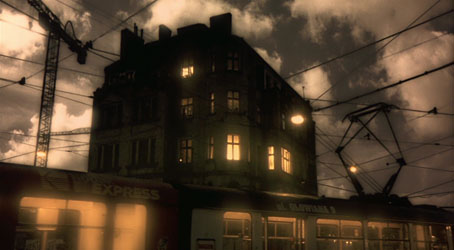
Avalon.
I can imagine there might be questions about the availability of some of these films. All I can say is search around. I’ve managed to accumulate half the things on this list on either DVD or blu-ray so they’re not all impossible to find. I did consider posting links but the whole issue of region coding complicates matters. Most of the short films circulate on YouTube, as do a number of the features although these don’t always include subtitles. Have I missed something good? (Don’t say Zardoz….) The comments are open.
Invention for Destruction (Czechoslovakia, 1958)

An evil millionaire named Artigas plans to use a super-explosive device to conquer the world from his headquarters inside an enormous volcano.
(Previously.) It seems fitting to start with a film that adapts a novel by one of the founders of the genre, Jules Verne. Karel Zeman’s third feature extended his technical effects to combine live-action with animation, creating a film in which the engraved illustrations of Verne’s novels are brought to life. With music by Zdenek Liska.
La Jetée (France, 1962)

The story of a man forced to explore his memories in the wake of World War III’s devastation, told through still images.
Chris Marker’s haunting short is one of the great time-travel stories, a 25-minute film that JG Ballard often listed as a favourite. Memory was a recurrent theme in Marker’s work, and memories here provide a physical route into the past, with the predicament of the unnamed protagonist concentrated on a single memory from his childhood. Marker’s interests ranged widely but he haunts the margins of science-fiction cinema in France, assisting Walerian Borowczyk with an early animation, Les Astronauts (1959), as well as the Pierre Kast entry below.
Alphaville: A Strange Adventure of Lemmy Caution (France, 1965)
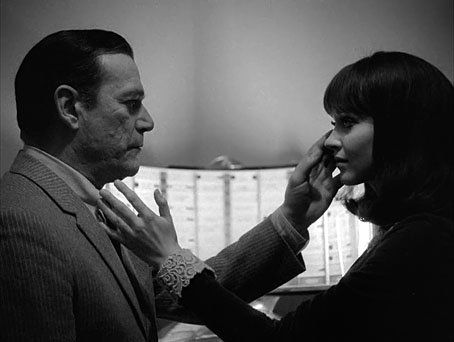
A secret agent is sent to the distant space city of Alphaville where he must find a missing person and free the city from its tyrannical ruler.
Another Ballard favourite, and not a neglected film by any means but the first in our collection of one-off SF excursions by directors better-known for other things. Alphaville is also important for being the first film to present itself as science fiction without any of the obvious or expected trappings of the genre. Paris in 1965 is Alphaville because Godard says it is. In part this is the director doing his usual thing of self-consciously adopting a genre; this is “science fiction” in the same way that Breathless is “crime”. But the conceptual leap was an important one for cinema, a step that freed film-makers from the need to build expensive sets and dress their cast in silver jump-suits. With Raoul Coutard’s high-contrast photography, Paul Misraki’s noirish score, Eddie Constantine’s bull-in-a-china-shop performance (he makes Ralph Meeker in Kiss Me Deadly seem soft-hearted), and the incomparable Anna Karina.
The Heat of a Thousand Suns (France, 1965)

(Previously) A one-off animated short by Pierre Kast with assistance from Chris Marker, drawings by Eduardo Luiz, and an electronic score by Bernard Parmegiani. A young man with his own spaceship solves the problem of faster-than-light travel then heads into the cosmos with his pet cat.
Fahrenheit 451 (UK, 1966)
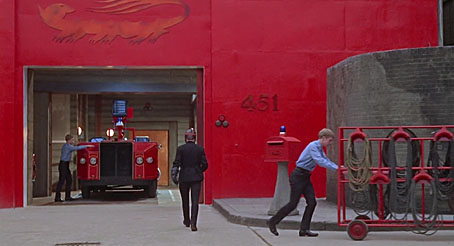
In an oppressive future, a fireman whose duty is to destroy all books begins to question his task.
Francois Truffaut’s first colour feature has always seemed a little dull despite its incendiary subject matter and the Hitchcockian urgency of Bernard Herrmann’s score. It might have been improved with an actor other than Oskar Werner in the central role but there’s still a lot I like about this one: the music, the shots of the SAFEGE monorail, Nicolas Roeg’s striking photography, and Julie Christie in a double role. There’s also some amusement for Brits in seeing a Frenchman presenting ticky-tacky English suburbia as a soulless dystopia. With spoken titles, flat-screen TVs in every home (it’ll never happen…), and Genet novels condemned to the flames.
Je t’aime, Je t’aime (France, 1968)
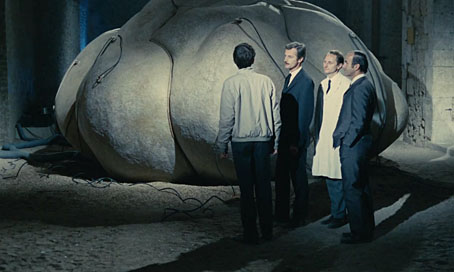
After attempting suicide, Claude is recruited for a time travel experiment, but, when the machine goes haywire, he may be trapped hurtling through his memories.
(Previously.) Much as I like toying with the idea that Last Year in Marienbad is science fiction there really isn’t anything in it that easily justifies the claim. Director Alain Resnais said that this one wasn’t SF either but it does at least feature a time machine. Resnais had collaborated with Chris Marker in the 1950s, and the pair remained friends, so it’s tempting to see this as a riff on La Jetée. (There’s even an echo of Marker’s film in the title…) Both films use a doomed romance as a focus for their examination of memory and time, and both feature choral scores, the music for this one being composed by Krzysztof Penderecki.
Swissmade: 2069 (Switzerland, 1968)
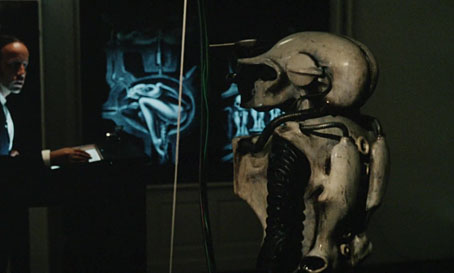
An alien visits Earth and records its experiences.
(Previously.) A semi-serious look at life in the Switzerland of the future whose most imaginative component is the humanoid being designed by HR Giger.
The Year of the Sex Olympics (UK, 1968)
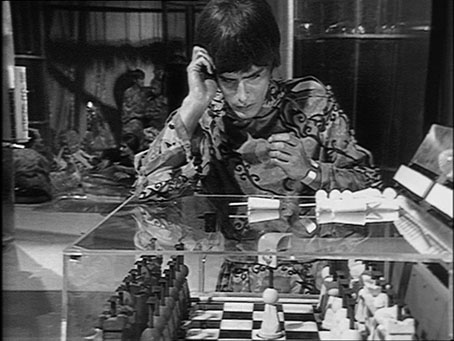
Set in a future when the world is dominated and run by television…Overpopulation is a problem, so there are gluttony programmes to put people off food and pornography programmes to put them off sex…Audience attention begins to wane, however, until TV executive Ugo Priest works on a new concept—a reality-based programme in which a couple is stranded on a bleak island, without the aid of any modern technology, and their efforts to survive filmed twenty-four hours a day.
Nigel Kneale wrote the BBC’s earliest SF dramas for television, The Quatermass Experiment and a controversial adaptation of Nineteen Eighty-Four. The Year of the Sex Olympics was almost as controversial for its depiction of a sex-obsessed future society but it’s Kneale’s prediction of reality TV that resonates today. His play is heavy with futuristic cliches—metallic fashions, neologisms and odd names—but the depiction of TV producers who will do anything to maintain the attention of a jaded audience prefigures the cynicism of Network and Nightcrawler. With Leonard Rossiter, Martin Potter and Brian Cox.
World on a Wire (Germany, 1973)

The Simulacron project is an artificial world designed to forecast future social and material developments. When the project’s technical director dies in mysterious circumstances, Dr Fred Stiller is asked to take his place. The death of Stiller’s predecessor is only the first of a series of events centred on Simulacron which tip Stiller into a world of escalating paranoia and madness.
Rainer Werner Fassbinder’s two-part TV film is an adaptation of Simulacron-3 by Daniel F. Galouye, one of the first novels about virtual reality. This was Fassbinder’s only SF entry as a director (although he did act in another: see below), a 204-minute drama that managed to pre-empt all the films exploring similar subjects years later. This being Fassbinder, it’s still one of the best entries in the VR sub-genre, effortlessly superior to The Thirteenth Floor (an adaptation of the same novel) and much better science fiction than contemporaneous efforts like Z.P.G. and Battle for the Planet of the Apes. World on a Wire was a German production but, as with Alphaville, Paris provides the settings for a future in which mirrors and shiny surfaces abound. With Klaus Löwitsch as Dr Stiller, plus a host of Fassbinder regulars including Günter Lamprecht, Margit Carsten and Gottfried John. Also a further nod to Alphaville with a cameo from Eddie Constantine.
Fantastic Planet (France, 1973)
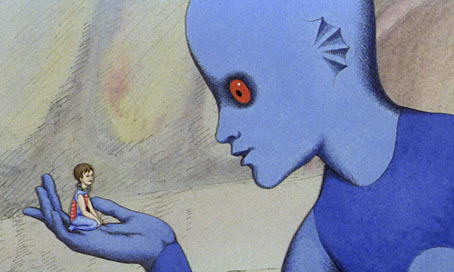
On a faraway planet where blue giants rule, oppressed humanoids rebel against their machine-like leaders.
René Laloux made three animated features based on French SF novels, with each film designed by a well-known French artist. The first of these, Fantastic Planet, was based on a novel by Stefan Wul, and has always been Laloux’s most popular film thanks to Roland Topor’s memorable visuals and a groovy score by Alain Goraguer. “Wild Planet” would be a more accurate translation of the French title, also a fitting description of a world filled with weird and dangerous alien fauna.
The Final Programme (UK, 1973)

A trio of scientists plan to create a self-replicating, immortal, hermaphrodite using the Final Programme developed by a dead, Nobel Prize-winning scientist.
The first feature based on anything from the SF New Wave, and an adaptation that its author, Michael Moorcock, has never liked. Robert Fuest didn’t have the budget to fully realise the chaotic near-future that Jerry Cornelius inhabits, nor the subtlety to convey the ironies in Moorcock’s fiction, but if you like the novels it’s a thrill to see any of this stuff brought to life. Jon Finch is perfect as the biscuit-munching Cornelius. With Jenny Runacre as Miss Brunner, plus Sterling Hayden, Patrick Macgee, and (briefly seen but not heard) Hawkwind.
The Invention of Morel (Italy, 1974)
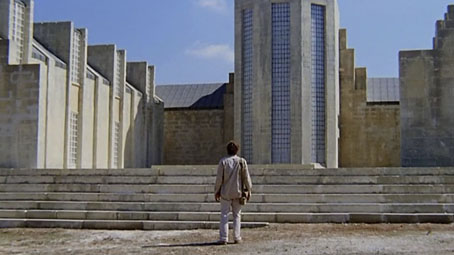
A castaway on an apparently uninhabited island discovers an empty building which thereafter becomes filled with elegantly-dressed people. He can see them but they all seem unaware of his presence.
The novel by Adolfo Bioy Casares was adapted for French TV in 1967, and for the cinema in this version directed by Emidio Greco. Rather than add another French title to this list I’ve chosen the Italian adaptation which doesn’t follow the book so closely but which has a superior setting and production design. With Giulio Brogi as The Castaway, and Anna Karina as his obscure object of desire, Faustine.
Space is the Place (USA, 1974)

John Coney’s low-budget feature has Sun Ra visiting Oakland in his spaceship in order to beguile the citizens with the Arkestra’s cosmic jazz which he hopes will persuade them to seek a better life in outer space. In other scenes he plays cards with the sinister Overseer for the fate of the Black populace. All the pimp stuff belongs in a different film but the shots of the Arkestra in concert are priceless, as is Ra’s open-topped car ride with Egyptian gods in the back seat.
Phase IV (USA, 1974)
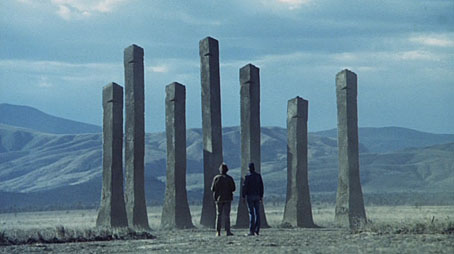
Desert ants suddenly form a collective intelligence and begin to wage war on the inhabitants. It is up to two scientists and a stray girl they rescue from the ants to destroy them.
The prevailing trend in the 1970s was for giant animals attacking people. Saul Bass went in the opposite direction, following earlier suggestions by Arthur C. Clarke that even insects might be capable of super-intelligence. If you live in a cold country it can be hard to take this as much of a threat but we don’t have fire ants in Britain, and besides which these are mutant ants. Bass’s scenario gets a little silly at times but the visuals are impressive, as is the insect photography. The original ending, which explained the title of the film, was a surrealist montage showing the eventual Triumph of the Ant. This was too much for the insect-brained distributors who forced a re-edit, but you can see the full sequence on the restored blu-ray.
Quintet (USA, 1979)
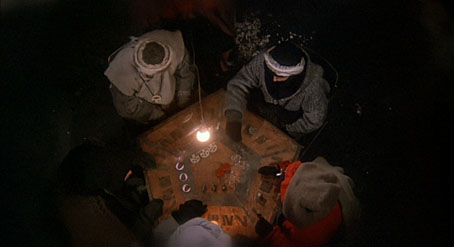
During a future ice age, dying humanity occupies its remaining time by playing a board game called ‘Quintet.’ For one small group, this obsession is not enough; they play the game with living pieces…and only the winner survives.
Robert Altman’s only SF film (Countdown was closer to science fact) doesn’t have many supporters but I like its picture of a dwindling future society where life has become so circumscribed that a lethal game offers the only excitement. Filmed in the icy ruins of Montreal’s Expo ’67 which looks authentically frozen and dishevelled even if Altman is unable to make the place seem like the huge city it’s supposed to be. The whole production is held together by Paul Newman’s stoic performance. Play the board game!
Dead Mountaineer’s Hotel (Estonia, 1979)

A police inspector is called to a remote mountain hotel. While trying to discover why he was summoned there a guest is murdered and the place is cut off from the world by an avalanche. Then things get strange…
The novels of Arkady and Boris Strugatsky have inspired a number of film adaptations. Stalker (1979) and Hard To Be a God (2013) are monumental works that aren’t on this list but are nevertheless essential viewing. Of the others I’ve seen to date, Days of Eclipse (1988) is okay but not very memorable, while Dead Mountaineer’s Hotel is better even if it seems slight compared to the Tarkovsky and Aleksei German adaptations. Grigori Kromanov’s film is pretty much a murder mystery for its first half until the strange events begin to multiply and Inspector Glebsky (Uldis Pucitis) finds himself out of his depth. With moody photography by Jüri Sillart, a synthesizer score by Sven Grünberg, and Jüri Järvet (Dr. Snaut in Tarkovsky’s Solaris) as the hotel proprietor.
Sapphire and Steel (UK, 1979–1982)
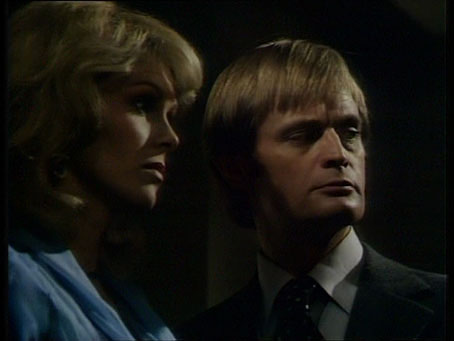
All irregularities will be handled by the forces controlling each dimension. Transuranic, heavy elements may not be used where there is life. Medium atomic weights are available: Gold, Lead, Copper, Jet, Diamond, Radium, Sapphire, Silver and Steel…. Sapphire and Steel have been assigned.
(Previously.) A studio-bound TV series devised by PJ Hammond that combined science fiction with horror, Sapphire and Steel is a uniquely strange creation even by the standards of British TV in the late 70s/early 80s. Sapphire (Joanna Lumley) and Steel (David McCallum) are temporal detectives, with each of their six assignments requiring them to correct disruptions to the Corridor of Time. These range from minor anomalies—people from the future on a sightseeing journey into the past—to incursions by malevolent forces who want access to the material Universe. The detective duo aren’t humans or aliens, they’re representatives of some cosmic repair agency that operates outside our continuum, and as such they don’t really care about any of the human beings they encounter. The final story, Assignment Six, reaches a peak of weirdness with a metaphysical confrontation in the café of an abandoned petrol station.
Death Watch (France/Germany, 1980)
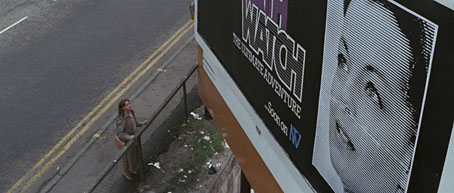
In a future where dying of illness is exceedingly rare, a terminally ill woman becomes a celebrity and a man with camera implants goes to secretly record her for a morbid TV show.
Reality TV again, and an excellent treatment of the subject. Bertrand Tavernier directs an adaptation of The Continuous Katherine Mortenhoe by DG Compton, filmed entirely in the city of Glasgow and the Scottish countryside. Romy Schneider is Katherine Mortenhoe, a woman determined to die in her own time and her own way, being followed by cameraman Harvey Keitel whose eyes have been replaced by risky, experimental devices. Tavernier’s near-future is little changed from 1980, with only the briefest hints of new technologies and suggestions of some ongoing social collapse. Glasgow’s sombre architecture and defeated streets provide an unusual setting for a storyline whose subject may be sensational but whose treatment is serious and adult throughout. With Harry Dean Stanton as a cynical and craven TV executive, and Max von Sydow as Katherine’s former husband.
Artemis 81 (UK, 1981)

The epic battle for the future of mankind is fought between an angel of light and an angel of death.
David Rudkin’s 185-minute TV drama has Hywel Bennett as a bisexual paranormal investigator with Sting as his guardian angel. This is a film that fires in so many different directions—metaphysical fantasy, mind-control paranoia, Hitchcockian psychodrama—that it’s only the conviction of its performers, especially Bennett and Dinah Stabb, that prevents it from flying apart. Endlessly fascinating, and made at a time when the BBC was still challenging its viewers with creative ambition. Don’t take my word for it, read this by Mark Fisher. With Dan O’Herlihy, and a very early role for Daniel Day-Lewis.
The Bunker of the Last Gunshots (France, 1981)

A military group of men is locked up in a bunker in an unknown future.
The 25-minute live-action debut of Jean-Pierre Jeunet and Marc Caro, both of whom appear among the cast of shaven-headed soldiers. A wordless depiction of ennui, absurdity, bursts of violence and escalating chaos, filmed in monochrome greens and blues.
Time Masters (France, 1982)
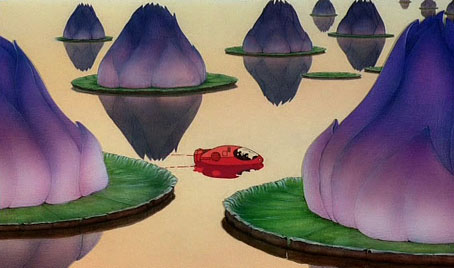
René Laloux’s second animated feature once again adapts a novel by Stefan Wul. When a small boy is left orphaned on a remote and dangerous planet a group of space-travellers hurry to rescue him. This one was evidently aimed in part at a young audience but children are likely to find the plight of Piel and his rescuers confusing and even frightening. The main attraction here is the production design by Moebius in his space-opera mode, still the closest thing we have to a full-on Moebius adaptation.
Chronopolis (France, 1982)
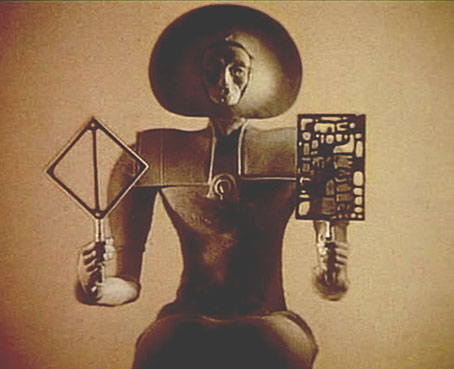
Weary immortals inhabit a metropolis in the sky and amuse themselves with constructions as they kill time and await whatever comes next.
Several of Piotr Kamler’s animated films can be classed as science fiction, especially The Green Planet (1966), a short account of alien life made with sand animation. At 52 minutes, Chronopolis is Kamler’s longest work, and one I often point to as an ideal in its depiction of an alien world that makes no attempt to explain itself. The inhabitants of this place may be humanoid but their environment and their activities are inexplicable throughout, as viewers all we can do is watch and wonder. With an electronic score by Luc Ferrari.
Liquid Sky (USA, 1982)
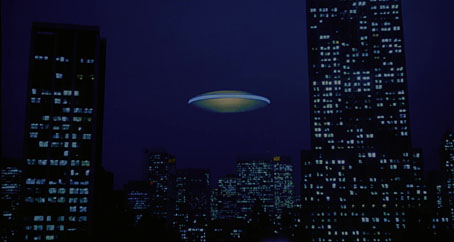
Sex, drugs and tiny aliens in midtown Manhattan. A very small flying saucer lands on the roof of an apartment belonging to Margaret, a young fashion model. The aliens are here to feed on human endorphins by shooting glass darts into the heads of anyone nearby who has an orgasm. A German UFO hunter turns up to explain all this but Margaret works it out herself when two people wind up dead in her room. Slava Tsukerman’s independent feature is a vivid portrait of New York’s polysexual bohemia, a film whose bright colours and solarisation would have seen it labelled as “psychedelic” a decade earlier. With co-writer Anne Carlisle in a gender-bending dual role, great photography by Yuri Neyman, and lots of neon lights.
Kamikaze 1989 (Germany, 1982)
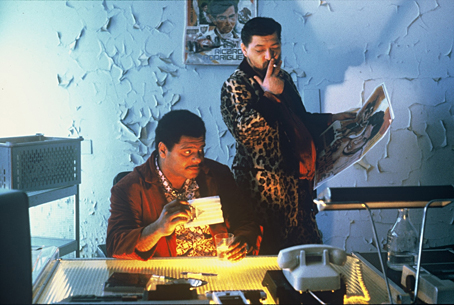
In a totalitarian society of the future, in which the government controls all facets of the press, a homicide detective investigates a string of bombings, and finds out more than he bargained for.
2089 might have made a more suitable date when the opening narration would have us believe that in a mere seven years German resourcefulness will have solved all of the world’s technological problems. Rainer Werner Fassbinder appears in his final role as Police Lieutenant Jansen, a detective with a leopard-print revolver to match his leopard-print suit. Wolf Gremm’s film is a comic-book view of the future, where the police headquarters has its own discotheque, and the neon aesthetics of Liquid Sky have taken over the world. Detective Jansen storms about the place with all the subtlety of Lemmy Caution, accompanied by electronic music from Edgar Froese. With Fassbinder regulars Günther Kaufmann and Brigitte Mira, plus Franco Nero in a minor role. Based on a novel by Per Wahlöö.
Taking Tiger Mountain (USA, 1983)
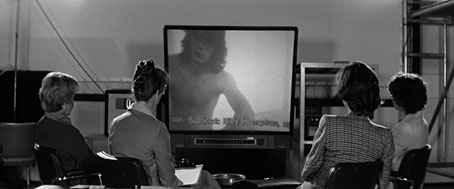
Militant feminist scientists brainwash research subject to assassinate the Welsh Minister of Prostitution.
(Previously.) Black-and-white footage filmed without sound in 1974 is repurposed years later by Tom Huckabee and Kent Smith as a bizarre SF scenario with narrative details borrowed from William Burroughs. With a young Bill Paxton in his first film role, lots of uncomprehending Welsh villagers, and a couple of hardcore sex scenes.
The Last Battle (France, 1983)

I’ve never been keen on Luc Besson’s oeuvre but I do like his debut feature, a wordless depiction of a post-apocalypse world in widescreen black-and-white. French SF cinema is heavily marked by the influence of Métal Hurlant, and this story owes as much to French comics as it does to the wasteland aesthetics of Mad Max 2. In a ruined clinic, The Man (Pierre Jolivet) and The Doctor (Jean Bouise) play cat-and-mouse with The Brute (Jean Reno) while fish rain down in the streets outside. JG Ballard would have relished the opening scenes of The Man constructing a light aircraft in an office filled with sand.
Angel’s Egg (Japan, 1985)

Visual poetry by Mamoru Oshii, based on designs by Yoshitaka Amano. A small girl wanders through a deserted nocturnal city carrying a large egg. She teams up with an older boy who wears a cloak and carries a cross. Neither of them knows who they are or where they are; the director says he doesn’t know what his film is about. None of this matters, it’s persistently strange and wonderful. With inexplicable machines, the shadows of giant invisible fish, and a large dose of religious symbolism. Also the only anime you’ll see where a static shot is held for two whole minutes.
Gandahar (France, 1987)
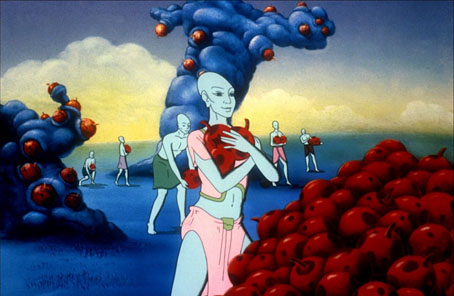
An evil force from a 1000 years in the future begins to destroy an idyllic paradise, where the citizens are in perfect harmony with nature.
René Laloux’s final animated feature is a more adult affair than Time Masters, based on a novel by Jean-Pierre Andrevon. The peaceful inhabitants of Gandahar are threatened by an invasion of identical metal humanoids whose abductions of the populace are helping to build their army of clones. The intrepid Sylvain is dispatched to find the source of the invasion and stop it for good. The production design by Philippe Caza is familiar from his comic books: lots of space hippies, strange creatures and bare breasts. Animated by a North Korean studio.
On the Silver Globe (Poland, 1988)
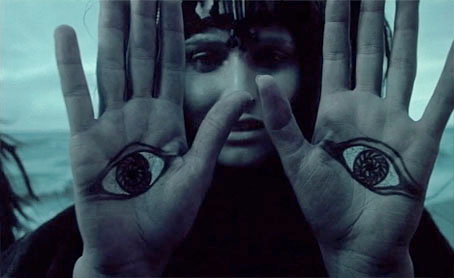
A team of astronauts land on an inhabitable planet and form a society. Many years later, a single astronaut is sent to the planet and becomes a messiah.
(Previously.) The Magnificent Ambersons of SF cinema, Andrzej Zulawski’s pet project, based on novels by his great-uncle, was cancelled by philistine apparatchiks leaving us with a mutilated masterpiece. Even with missing scenes this is an incredible film, turning familiar scenarios—planetary exploration, alien encounters—into something rich, strange and unforgettable. A proper reissue is long overdue.
Bunker Palace Hotel (France, 1989)
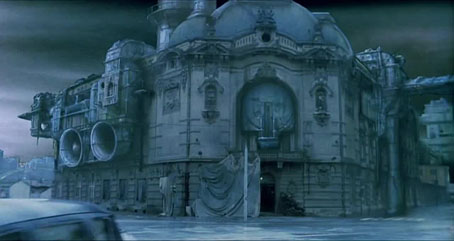
Comic artists are sometimes asked to create concept art for feature films. French artist Enki Bilal has done this on a few occasions while also directing three features of his own. His debut is set in an unidentified city where acid rain falls and civil war rages in the streets. When the conflict sends the deposed elite into an underground refuge (where all the servants are malfunctioning androids), a pair of resistance fighters infiltrate the place with assassination in mind. The anticipated confrontation doesn’t materialise but the sets are good, as is Jean-Louis Trintignant, an industrialist android-creator whose name—Holm—may be a nod to the android actor in Alien. Also starring Carole Bouqet, Jean-Pierre Leaud and Maria Schneider.
Testuo: The Iron Man (Japan, 1989)
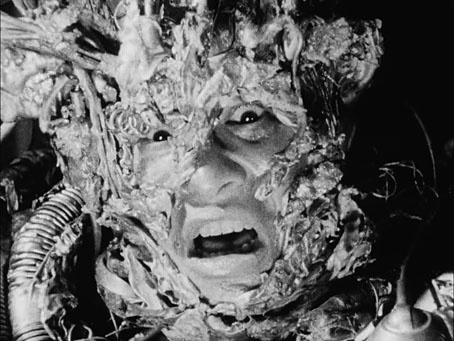
A businessman accidentally kills The Metal Fetishist, who gets his revenge by slowly turning the man into a grotesque hybrid of flesh and rusty metal.
67 minutes of non-stop clattering mayhem, Shinya Tsukamoto’s micro-budget debut is like a David Cronenberg remake of Eraserhead locked on fast-forward. I still prefer this one to its sequel, Body Hammer, although if the first film didn’t exist then the sequel would be listed here. I haven’t seen Bullet Man, the third entry in the series, or any of Tsukamoto’s other films but they’re marked for future viewing.
Wax or the Discovery of Television Among the Bees (USA, 1991)

A man recalls the story of how his bees implanted in him a bee television, causing him to lose all perception of space, time, and self in the deserts of the American West.
The first film to be streamed across the internet (to a very small audience, no doubt), David Blair’s debut feature is a rambling monologue accompanied by an equally rambling visual collage of stock footage, computer graphics and video sequences which show the writer/director/narrator wandering through missile testing sites and the Alamagordo Desert dressed in a beekeeper’s outfit. The effect is like watching an Adam Curtis documentary while dosed on magic mushrooms: your brain is making furious connections but what does it all mean? If Thomas Pynchon isn’t a direct influence there’s enough of an intersection with Pynchon’s preoccupations for this one to be included on an earlier film list, especially the glimpse of a V-2 rocket and several references to the Hollow Earth. Not quite Phase IV: The Bee Version, more like Phase B. With a picture of William Burroughs as the narrator’s bee-keeping ancestor.
Moebius (Argentina, 1996)
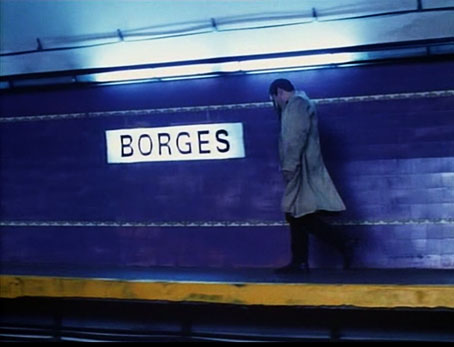
A train on the Buenos Aires subway system suddenly vanishes.
Jorge Luis Borges had an early job editing Urbe, a “pseudo-scientific” promotional magazine for the Buenos Aires underground. In Moebius “Borges” is the name of a fictional station in the same underground where a vanished train still seems to be running somewhere in the system. Guillermo Angelelli is the young topologist given the task of solving the mystery. Gustavo Mosquera directs an adaptation of A Subway Named Mobius by AJ Deutsch, relocating the story from Boston to Buenos Aires, and making great use of the city’s labyrinthine network of rail tunnels. A production of the Universidad del Cine but not an amateur production by any means.
Tykho Moon (France, 1996)
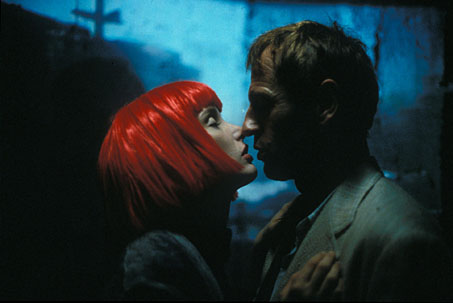
Enki Bilal’s second feature is better than Bunker Palace Hotel, and much closer to the decayed dystopias depicted in the director’s comic stories. Mac Bee (Michel Piccoli) is the demented, tyrannical ruler of a segregated city on the Moon that resembles a dusty, remixed Paris. The ruling dynasty urgently need to find the mysterious Tykho Moon so they can harvest the man’s neurones which they think will cure their genetic illness. A double agent, Lena (Julie Delpy), and an assassin from Earth, Glenbarr (Richard Bohringer), are after Tykho Moon for reasons of their own. With Johan Leysen and Jean-Louis Trintignant.
Spectres of the Spectrum (USA, 1999)
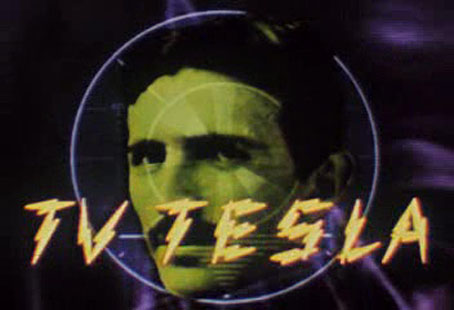
Set in 2007, a father and daughter try to discover why the planet has ended up as a polluted cesspool of toxic, corrupting transmissions where its citizens expend terrific energy pursuing the most base rewards of a vacuous consumer culture.
Two-thirds of the way through Craig Baldwin’s semi-fictional history of electromagnetic technology there’s some discussion of the way the original promise of the internet has been subsumed by corporate interests, replicating earlier subjugations of the freedoms promised by radio and TV. The irony here is that since 1999 the kind of playful paranoia exemplified by Spectres of the Spectrum has been spoiled forever by the internet’s legions of credulous nitwits. (The same goes for the prank documentary Alternative 3.) If you can forget this for a while then Baldwin’s apopheniac speculations might serve as one half of a double-feature with David Blair’s Wax…. Both films cover similar territory—mass media, military technology, intersections between science and the supernatural—while using voice-over to stitch together long stretches of disconnected footage. Once again, Thomas Pynchon is a spectre at the feast. This time, however, the Pynchonian factor is reinforced by the continual references to Nikola Tesla even though in 1999 Pynchon was still several years away from writing about Tesla in Against the Day. With additional commentary by “media archaeologist” Erik Davis, musical interludes by Korla Pandit, and a time-travelling Airstream trailer.
Avalon (Japan/Poland, 2001)

In a dystopian world, a woman spends her time playing an illegal and dangerous game, hoping to find meaning in her world.
The lag between tech proposal and cinematic appropriation gave us a wave of virtual-reality dramas around the turn of the century, a few years after VR had been widely proclaimed as the next big thing in computing. Mamoru Oshii’s Avalon was a late entry that was intriguing for being a live-action Japanese film made in Poland with a Polish cast. Malgorzata Foremniak is Ash, an expert player who spends her time earning credits inside a war game that can leave its losers brain dead. After so many similar stories the plot holds few surprises but the details are attractive, especially the run-down sepia world that Ash inhabits. If Krzysztof Kieslowski had made a science-fiction film it might have looked and sounded like this. With a majestic score by Kenji Kawai, visual references to La Jetée, and the basset hound that appears in many of Oshii’s films.
Low-Flying Aircraft (Portugal/Sweden, 2002)
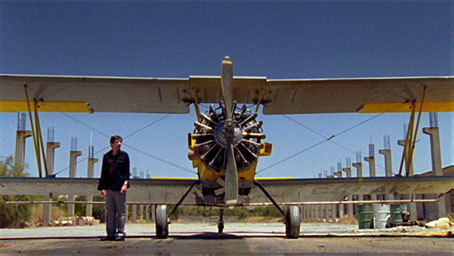
Based on the short story by JG Ballard and set in a near future where humans are dying breed.
JG Ballard’s stories present problems for film-makers: his central characters often accept their predicament so easily that they don’t provide the drama that audiences expect. Writer/director Solveig Nordlund adds extra characters to create some conflict but her story remains broadly the same as Ballard’s: a couple arrive at an empty seaside resort hoping to see the birth of their first healthy baby. A very creditable adaptation by the director of JG Ballard: The Future is Now (1998).
Immortel: Ad Vitam (France, 2004)
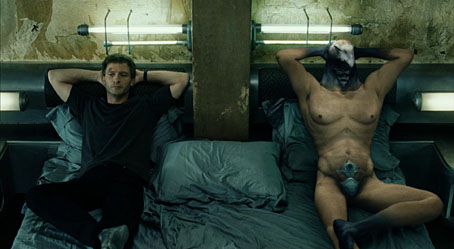
New York City, 2095: a giant pyramid floats above the skyscrapers, filled with genuine Egyptian gods, while Central Park is now a walled-off “Zone” which citizens enter at their peril. Nikopol, a political activist, is awakened prematurely from a 30-year punishment-sleep to find himself missing half a leg and with his body sporadically possessed by the hawk-god, Horus, who needs him to impregnate an alien woman.
Enki Bilal’s third feature is his best to date, albeit compromised by its uneven blend of live action with CGI that looks crude by present standards. This is a shame since the film is a great adaptation of the first two books from his Nikopol Trilogy, with Paris replaced by New York, and the events of the comics remixed and condensed. With Thomas Kretschmann as Nikopol, Linda Hardy as a blue-haired alien, Charlotte Rampling as a sympathetic doctor, and lots of flying cars.
Primer (USA, 2004)

Four friends/fledgling entrepreneurs, knowing that there’s something bigger and more innovative than the different error-checking devices they’ve built, wrestle over their new invention.
Shane Carruth’s famously inexpensive debut is the trickiest time-travel drama of all, and one that repays multiple viewings. Tricky, and also more believable than many films whose catering budget alone would have cost more than this one.
Paprika (Japan, 2006)

When dreams begin to invade the real world, dream-detective Paprika has to find a way to restore the equilibrium.
Satoshi Kon’s final feature is a delirious collision between the realism that Japanese animation does so well and a series of incredibly detailed fantasy episodes. Even though this was based on a novel by Yasutaka Tsutsui, the effect is like seeing some of the stranger moments from Ghost in the Shell 2: Innocence extended to feature length. This isn’t a complaint. Kon’s premature death in 2010 was a great loss for cinema.
Dante 01 (France, 2008)

Marc Caro’s solo debut eschews the quirky humour of his collaborations with Jean-Pierre Jeunet for a grim account of a psychiatric prison orbiting a hell-planet, Dante 01. The prison’s small population of dangerous inmates and their doctors are the same shaven-headed individuals that have been a fixture of all Caro’s films, while the prison itself is a gloomy warren of Nostromo-like corridors. The balance of power is upset by the arrival of a new inmate who possesses inexplicable healing abilities, and a doctor determined to force an experimental nano-treatment on the prisoners. With Jeunet regular Dominique Pinon, decent special effects, and plenty of religious/mythological symbolism.
Maska (UK/Poland, 2010)
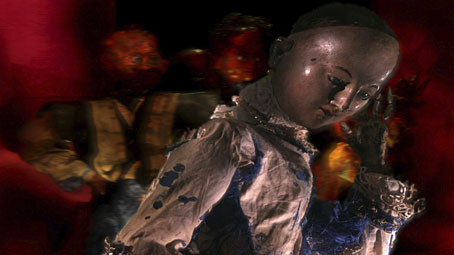
In a technologically developed but feudal world beautiful Duenna is forced to choose between love and the task for which she was created.
I never expected the Quay Brothers to broach the world of science fiction but their appreciation of Polish art led them there with this adaptation of a story by Stanislaw Lem. Magdalena Cielecka provides the voice for an artificial woman who isn’t all she seems on the surface. As with all the Quays’ recent puppet films, there are so many fleeting moments and tiny details that every viewing reveals something new. With a score by another Polish artist, Krzysztof Penderecki.
Previously on { feuilleton }
• Foss, Jodorowsky and low-flying spacecraft
• Last and First Men
• Science Fiction Monthly
• The Captive, a film by René Laloux
• The Last Angel of History: Afrofuturism, science fiction and electronic music

John, thank you so much for this incredible compilation of wonders!
You might have already checked this out, but “The 10th Victim” by Elio Petri is another cool 60s-posing-as-the-future film that you might enjoy. I think it abandons any interest in the science-fictional aspects about halfway through, but it is a great movie overall, I think.
Thanks, John. A lot to search out and watch. A few old favourites but most completely new to me.
“Artemis 81” – I didn’t see it when it was originally broadcast (a bit too young, followed up years later on DVD, after seeing “Penda’s Fen”) but I was aware of it due to a positive preview in….”Smash Hits”. That review was probably due to Sting’s presence but that they bothered at all seems unlikely from 2023. As you say, and again in Mark Fisher’s essay, that whole idea about producing anything that’s not immediately straight forward and might challenge folk seems lost now, especially from mainstream tv (old gripes I know). It’s also sad that the scope for “sci-fi” films seems to have mostly been reduced to “Star Wars” and super hero movies. Egyptian gods in NYC 2095? Now that sounds a lot more interesting than another MCU film.
Thanks, Johann. The 10th Victim was on the long-list but I removed it for similar reasons to The Unknown Man of Shandigor, too much spoof and not enough SF.
Graeme: I would have watched Artemis 81 that evening (I remember it being advertised) but went out with friends instead, an error I regretted for a long time after. I eventually got to see it when another friend sneaked me a VHS copy from the BBC library. (This in itself sounds bizarre now, the lengths you used to have to go to in order to see certain rare films.) Mark Fisher writes a lot about the strange tenor of British TV during that time, a very paternalistic attitude towards audiences while allowing all manner of things to be made that wouldn’t stand a chance of being commissioned today.
A great list with lots I’ve never seen or heard of before unless you already wrote about them here earlier.
I would have included Silent Running (1972) although that’s probably too well known to be considered obscure
Oh and PS Have you seen the German TV series Dark ?
https://en.wikipedia.org/wiki/Dark_(TV_series)
Yes, Silent Running is rather too well known. I’ve also never been convinced by its suggestion that the Earth is now free of trees. How is that supposed to work? Douglas Trumbull made another SF film, Brainstorm, that has an intruiging premise–a machine that records experiences–but the script didn’t really do the idea justice.
Dark is one of those things I’ve yet to catch up with. It’s on the future viewing list.
I would have had Altered States and Dark City in there, but that’s me.
(I hold a candle for The Thirteenth Floor, though loving World On A Wire… and noting both are very different from the novel, so there’s actually room for a third, more accurate pass…)
I like both of those but, yes, they’re rather familiar. This reminds me I still haven’t seen the director’s cut of Dark City.
Amazing list, there are a lot of tv productions I don´t even hear of. Of course, all lists are very personal, but I think this movie could be included: “Golem” (1980) by Piotr Szulkin. It´s a Polish dystopian take on Meyrink´s classic Occult and dark novel which make it well to be faithful to his literary source and at the same time to present a bleak future totalitarian world. Maybe “Black Moon” (1975) by Louis Malle fit in the list too.
Thanks, Jesús, I’m aware of both of those films although I’ve yet to see either of them. I’ve actually had a copy of Golem on disc for a while which I thought about watching prior to writing this then it slipped my mind while I was checking details and so on. We’re very fortunate today that films like this are much easier to find than they used to be.
Absolutely excellent list, John. Cheers for this.
It’s been an eternity since I watched them, so I can’t entirely vouch for how well they’ve aged, but I remember liking 1997’s The Sticky Fingers of Time (Hal Hartley-esque deadpan low-budget time-travel), 1987’s Friendship’s Death (Jarman-era Tilda Swinton as an android sent back in time to 1970s Jordan – and speaking of Jarman, by the way, how about Jubilee?) and two by Australian maverick Rolf de Heer, 1988’s Incident at Raven’s Gate (…something to do with aliens?) and 1997’s Epsilon (…also something to do with aliens?).
Oh! And also: 1973’s Murder in a Blue World (superb, comic-book-hued homage to/piss-take of A Clockwork Orange by gay activist/socialist Eloy de la Iglesia, starring Sue Lyon in maybe the best performance she ever gave), 1982’s Cafe Flesh (the rare adult film with a gorgeous New Wave aesthetic, courtesy of director Stephen Sayadian, and a quotable script, courtesy of novelist Jerry Stahl; a favorite of Brian de Palma’s), and 1983’s Born In Flames (dystopian punk-Marxist-feminist cult classic; on YouTube, but almost certainly destined to never again be publicly screened in the US as the climax involves…bombing the World Trade Centre. Yeah). And would the director of 1984’s The Brother From Another Planet (John Sayles) be too well-known for the film to fit the list’s criteria?
(Ah! And I just remembered: how about Abel Ferrara’s 1998 William Gibson adaptation, New Rose Hotel?)
Many thanks for such a treasure trove of recommendations. Your mention of Wax or the Discovery of Television Among the Bees reminded me of Waxweb, its online counterpart. I’d long forgotten it, but now recall being fascinated by its seemingly ever-branching hypertext narratives back in ’93/’94 (?) . Do you deem Ghibli’s Nausicaä too mainstream, not your taste or outside your chosen parameters? Also Space 1999?
Amelia: Thanks! And, damn…Brother from Another Planet was nagging at me–“Wasn’t there some Jarmusch-like thing in the 1980s?”–but I failed to recall it. Murder in a Blue World is one I still haven’t seen; Friendship’s Death I have seen but didn’t really like although I ought to watch it again (the BFI just did a reissue); I thought about including Jubilee but its near-future is so half-hearted that it’s very marginal indeed. The same goes for Britannia Hospital. Derek Jarman did have plans for a proper SF film, Neutron (see previous posts), but the project was too ambitious. I’ll have to check out those Australian films, I thought there ought to be something from Australia that wasn’t the obvious cars in the desert. New Rose Hotel I still haven’t seen (the poor reviews aren’t very enticing) but it’s been available at Rarefilmm for a while so there’s no excuse not to try it.
Colin: Yeah, Nausicaä is like Ghost in the Shell, no longer the cult item it used to be. As for Space: 1999, I grew up watching Gerry Anderson’s productions, and watched all of the Moonbase Alpha stuff but mostly for the special effects. Too many of the stories were stupid and annoying when you had them meeting different aliens every week. UFO had a silly premise but some of the stories were surprisingly adult considering the series was mostly aimed at kids.
Brilliant work John – that’s the rest of my year’s viewing sewn up. I’m not sure if Peter Fonda’s Idaho Transfer would be suitable for this list? I picked up a VHS copy from a market stall years ago, but now can only seem to remember deserts, flared trousers and a great Bruce Langhorne score that matches his work on The Hired Hand. Might be worth a second viewing, if I can locate the tape again…
Thanks, Martin. Idaho Transfer is a) one I haven’t seen yet, and b) one I was reading about some time last year then forgot all about while compiling this lot. So it’s one to check out. I’ve spent a lot of time recently looking for obscure European films (and some Russian ones) rather than independent US releases so things like the Fonda go unnoticed.
Hi John, hard to believe, but I have been reading this blog for a decade now. I could not thank you enough. I took the liberty of making this a Letterboxd list for convenience:
https://letterboxd.com/sighsigh/list/john-coultharts-strange-adventures-film-list/
Some films I’ll look for there.
Noel Pemberton-Billing, an English fascist inventor, aircraft builder and homophobe, wrote the script for a 1929 half-silent, half-talkie film called High Treason, inspired by Metropolis, about a future war in the air. A weird mixture of vision and preposterousness.
All Czech: Late August at the Hotel Ozone is set in a post-nuclear war world where the only survivors are a group of schoolgirls and a woman teacher…
Ikarie XB-1 (based on a book by Lem) was dubbed and edited and released in English as Voyage to the End of the Universe. The original is much better. I think it influenced 2001- a Space Odyssey.
V?ra Chytilová’s Wolf’s Hole is a strange SF/horror allegory. Many of her other films have strong SF/fantasy elements as well.
Trale: Thanks! Good to see all those posters together. Swissmade was a collection of three films by different directors, with 2069 being the final episode. These seem to be original posters: https://posteritati.com/film/8002/swiss-made
Roger: Thanks also. Late August… is one I’ve known for years by the title The End of August at the Ozone Hotel but still haven’t seen. I’m never in a hurry to see doomy post-apocalypse things, too many of them follow the same inevitable pattern of struggles for survival/resources and so on. There’s another Strugatsky Brothers film along these lines, Dead Man’s Letters, which I’ve yet to see.
I’ve got Ikarie XB 1 on DVD, and wrote something about it here: http://www.johncoulthart.com/feuilleton/2013/09/25/ikarie-xb-1/ I’d write that piece differently today, it’s a little too dismissive. I didn’t put Ikarie in the list since the story is pretty routine space exploration. It looks great, though, and I intend to watch it again.
The only Vera Chytilová I’ve seen so far is Daisies (inevitably) so I really need to look for more.
Thanks for the list John. I was lucky to see Avalon during its original release and managed to snag the film poster, which I still have today. Unfortunately, as it measures 156cm high x 116cm wide, it’s too big for me to put it up anywhere.
Thanks, Gareth. I’m familiar with the poster problem. I was collecting them for a while in the early 1980s but spoiled a few good ones by pinning them on living-room walls at a time when I knew a lot of cigarette smokers. Finding suitable frames was always a problem. I got two frames from Ikea which were almost the right size but only if you folded part of the lower edge of each poster so they’re still not ideal.
Good to see this thread continues since I’m late to the party. Let’s talk American TV. Aside from a few episodes of The Outer limits (1963-1964) we really have no TV SF that rises to the level of The Prisoner or even Blake’s 7. However, in the 70s the ABC broadcasting Network, a perennial also-ran in the ratings desperate to increase their viewership, began a series of made-for-TV movies. It was used as a source of potential series pilots but included a few interesting standalones, several SF themed. Because of their humble production values they tended to be character driven and often were well written and featured prominent American character actors. I checked and all of these are currently available on YouTube although in varying image quality.
The Mysterious Two – inspired by the couple who founded the Heaven’s Gate UFO cult years before the cult’s demise. A young man chases a UFO group to find his girlfriend who ran away with them.
The Challenge – the Americans and Chinese attempt to resolve a Cold War nuclear standoff by each side selecting a champion to fight on a tropical island. Full of Vietnam era cynicism and an anti-militarism remarkable for American TV.
The People – based on stories by Zenna Henderson about a group of aliens who have taken refuge in an isolated village in Appalachia who hire a human schoolteacher for their children.
The Love War – A pair of aliens come to earth to fight a battle with another pair for the fate of the earth. No spoilers but a wonderfully 70s downer ending.
Nightslaves – based on a Richard Matheson short story, a guy who survived a bad accident goes with his wife to a small town for rest. Except in the middle of the night all the town folk, including his wife, march out into the fields. They return the next morning and each time have no memory of the episodes. Of course they think he’s the crazy one.
Not fine art but while no one was looking they got away with some interesting stuff. It’s good to see it available, even booted.
Thanks, Stephen. US TV movies usually showed up here but none of those sound familiar. In the US you did have The Twilight Zone and The Outer Limits so it’s not all bad. And the TV movies threw up a few worthwhile one-offs such as Spielberg & Matheson’s Duel (which I watched again recently) and Gargoyles. On the SF front I enjoyed The Martian Chronicles as well, in fact I might have added it here if it wasn’t so well known.
So many under-loved favorites here — I’d add David Gladwell’s adaptation of Doris Lessing’s “Memoirs of a Survivor”, another dispatch from the Miserable Times of “Deathwatch”. Alexander Kluge’s $1.98-budgeted slapstick anti-corporate “Der große Verhau”. (And maybe a little tangential, but while we’re talking Eastern Bloc mania, Oldrich Lipský’s take on “Carpathian Castle”.)
Oh, and I’ve been periodically racking my brain trying to dig the title of “Taking Tiger Mountain” out of my drug-sodden memories of the early 80s. The training scenes stuck with me but anything that would help me actually re-find the film was just dissolved. So thanks for that.
Splendid list. Good coverage of German TV. But no Rainer Erler? The Blue Palais (five different feature-length SF movies), The Dump (“Die Halde”), Plutonium, Operation Ganymed (sic!), Flesh / Spare Parts, all very good productions from the 70s / early 80s.
Jim F: Thanks, Memoirs of a Survivor is one I know by name but I’m fairly sure I haven’t seen. And I think Lipsky is a director I only know via the Quay Brothers mentioning him so I need to explore further. Wikipedia says Jan Svankmajer worked on the one you mention so that’s promising.
Grubenfisch: Thanks, also. German TV hasn’t always travelled over here with the exception of oddities like Das singende, klingende Bäumche. The only SF production I know of apart from the Fassbinder is Raumpatrouille which is a bit too conventional for this list.
Hi John, regarding Rainer Erler: at least for Fleisch (Flesh) / Spare Parts and Operation Ganymed there have been English-dubbed DVDs and / or CD-Rs (mostly VHS rips).
I’d also recommend as obscure Scifi gem the 1970 German TV movie
https://en.wikipedia.org/wiki/Das_Millionenspiel
which was IMHO one of the first movies about a dystopian “Battle Royal” as TV entertainment, very similar to Stephen King’s novel “The Running Man” (from 1982) which spawned that Arnie flick.
Ah, Das Millionenspiel is one I definitely should have remembered since I’ve mentioned it in a previous post about Can! http://www.johncoulthart.com/feuilleton/2016/02/08/can-soundtracks/ I also have some of the musc on the Lost Tapes album. I’ve always been curious about that one since it was based on a Robert Sheckley story (as was The 10th Victim) so I’ve gone and found a viewable copy. Thanks for the reminder!
It’s hard to take seriously your broad and completely unsupported dig at the “silliness” of Saul Bass’s *Phase IV* scenario (actually, the script is by playwright and Hugo Award-winner Mayo Smith), given some of the other garbage that you tout here.
Good coverage of Can soundtracks, John. I have the “Lost Tapes”. Now maybe a post on Tangerine Dream soundtracks? I remember many strange films with those. Tangerine Dream is mainly Edgar Froese. He once lived in a Berlin flat together with David Bowie and Iggy Pop. Here’s a rundown of all the films and whatnot his “band” provided with their krauty ethereal synth music.
https://en.wikipedia.org/wiki/Tangerine_Dream_filmography
“Das Millionenspiel” is very memorable to me because most of the cast was effectively playing themselves in their public roles: The “Sport Reporter” (Heribert Fassbender) was one of Germany’s most popular sport reporters, the deadly show’s anchor (Diether Thomas Heck) was a popular late-night show anchor, the commenting experts in the studios were real known talkshow hosts and “experts” (Arnim Basche, Gisela Marx) and so on. And the main villain of the film, Koehler, was played by the guy who became one of Germany’s leading TV and cinema comedians in the 80s (Dieter Hallervorden), known for his inane slapstick antics. And you can see those right in this movie, darkly.
Tangerine Dream is very familiar territory (eg: http://www.johncoulthart.com/feuilleton/2020/11/16/cosmic-music-and-cosmic-horror/ )–I have all their albums up to the end of the Schmoelling era, many of them in multiple versions; also all the Froese solo albums up to 1983–but I’ve never felt that they were undocumented to a degree to warrant a soundtrack post. The Can post was done to satisfy my curiosity since many of those films were (and still are in some cases) little known or seen outside Germany. You can’t really say the same about TD when they were creating music for Hollywood.